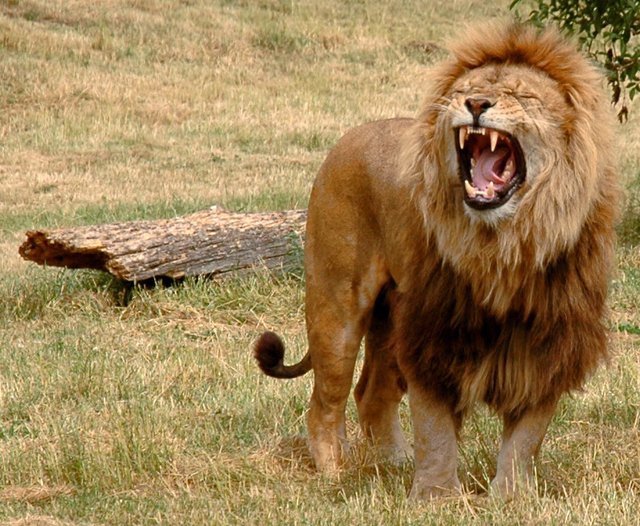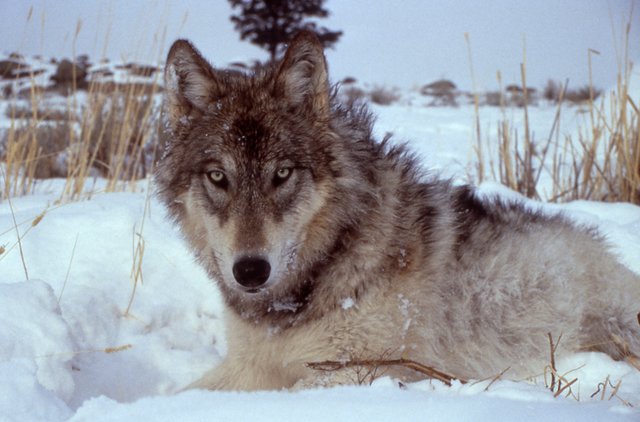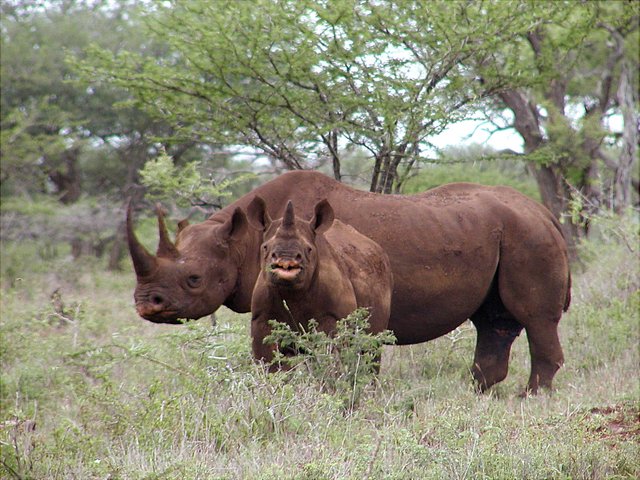Translocation of animals; a good conservation strategy, but it’s far from as easy as it sounds!
Species translocation is a much-used tool by conservationists who want to prevent species from seeing a population decline or even a species extinction, and I’m sure you’ve seen the word translocation used multiple times in my posts already. Today we will be taking a closer look at this type of conservation management to learn about the benefits and potential problems with this method of species conservation, and look at a fatal example of how it can go wrong.
What is species translocation?
The word translocation might sound a bit strange, but it simply means “to move from one place to another”. When we’re talking about species translocation, we simply refer to humans moving animals from one place to another. It generally only refers to when we move wild animals to another place, and therefore it does not really apply when we put release captive animals back to the wild.
The exact method of translocation depends on the animal species, and there are obviously a lot of trouble to translocate big, dangerous animals to a new place. For example, how would you move wild pack of lions to a new area?

It would probably require a lot of planning if you were to move this guy from one area to another. Image by Wikimedia Commons user Robek, posted with the creative commons attribution-sharealike 3.0 unported license.
Anyway, there are many reasons why we would want a translocation, and the most used one is typically because the species is facing a threat at the current location. A classic example is African animals that are threatened by poaching, so we move them from their original area to a national park that is protected by park rangers.
The threats are not always as obvious as they are with poachers, and there are at times even translocation programs taking place to prevent populations from falling to a too low number. By merging two or more populations, the species get a lesser range, but the benefits from being a larger population might outweigh the problems of a smaller range.
Some species are also translocated prior to human development in areas. If an area is designated for mining, agriculture or another invasive activity, then it’s a lot better to translocate the animals before they begin the building on the site, instead of confronting the animals directly.
A successful translocation effort can at best save a species from going extinct, and there are many success stories where a species just kept declining for a long time, but was saved by a translocation strategy that lead to a thriving population in another area. I won’t go into a lot of details of the success stories, since there are so many, but the best-known example is probably the translocation of wolves (Canis lupus) to the Yellowstone National Park in the United States. If you haven’t heard of this, then search for it on Google, because this topic has been written about hundreds of times already!

One of the wolves in Yellowstone National Park. Image is Public Domain.
The problems with translocation
Let’s rather take a look at some of the issues we are facing when we want to translocate a new species. A lot of the issues are solved before the process even begins, but there has also been unforeseen events that had to be solved in-situ right in the middle of a difficult transportation.
The biggest issue is finding a new area that is actually usable for the species we want to translocate. While they might look almost the same to us humans, they might be completely different when it comes to the survivability rate for the animal.
The entire biological composition might also be different, and things like abundance of food, number of predators in the area, or available shelter will obviously play a big role in the success of the translocation.
The survival rate of a translocation event also greatly depend on the taxa of the species. Birds and mammals are generally much more likely to survive and thrive in a new area compared to amphibians. This is most likely due to the fact that birds and mammals tend to be able to survive in a more varied habitat, while most amphibians require a very specialized ecosystem to survive.
Like you would expect, the transportation itself varies greatly between the different species that are translocated. While it might not require all that much effort to get some wolves into cages that are put in semi-trailers, just think of how difficult it is to transport fragile amphibians that require a constant level of humidity, temperature, and might be very sensitive to noise.
Most animals tend to survive the transport itself, and the first few days in a new area tend to when it's a "make it or break it" type of situation.
Case study: 8 Black Rhinos (Diceros bicornis) died from a translocation attempt
About a week ago, a translocation event took place in Africa. The objective was to move a total of 13 black rhinos (Diceros bicornis) from Nairobi to a newly created national park in the southern part of Kenya. The black rhinos are threatened by poachers who kill them to get their horns, and the species is classified as Critically Endangered by the IUCN Red List.
Getting these animals to a national park would be great news for the species, and conservationists hoped that they would play nice with the rhinos already in the park, and eventually reproduce and create a healthy population with a higher gene pool than they currently got in the park. However, things did not go according to plan this time.

A male black rhino with a calf. Image is Public Domain.
While there is no official word on what happened, what we do know is that eight of the fourteen rhinos have died. Some sources claim that the rhinos died from salt poisoning. Apparently the new home would have saltier water than their original habitat, so they movers tried to adapt them to drinking saltier water. The source claims that the animals drank the saline water, got dehydrated, and then drank more salted water to quench their thirst. This obviously dehydrated the animals to a point where they died.
This is obviously a huge mistake from the people responsible for making them get adapted to saltier water, but it still goes to show just how much detail they need to account for before a translocation event. Who would have even thought about the different salt levels in the water between the areas? And there are hundreds of small things like this that needs to be solved prior to a translocation.
It’s very sad that this translocation event didn’t go as planned, and this puts the black rhinos one step closer to extinction. The other animals that did not die from salt poisoning are under strict observation now, and from what I understand, it seems likely that they will be fine.
Sources
- An Introduction to Conservation Biology by Richard B. Primack and Anna Sher. This is a great book, and includes a lot of information about translocation of species.
- Translocation as a Species Conservation Tool: Status and Strategy by Brad Griffith et. al. Sadly it’s behind a paywall unless you got a university license.
- 8 Endangered Black Rhinos Die in Kenya After Relocation, posted in The New York Times.
Thanks for reading
Thanks for checking out my post about translocation of species! I hope you learned something new by reading it, and hopefully you have a better understanding of how translocation works, and the potential problems with it.
I also want to end with the fact that despite us looking at some of the problems, most translocation efforts end up as a success. It's a great tool for conservation workers that allows us to move animals to a place where they will be more likely to survive.
About @valth
Hey, I'm @valth - the author of this post. I love to write about nature, biology, animals, nature conservation, ecology and other related branches of science, and I occasionally write about my life, about Steem or about random stuff as well. I'm trying my best to write at least one post every day, so make sure to give me a follow if you enjoy my content and want to see more of it.
Join the @valth community!
I love nothing more than to engage with my readers, so please join the @valth community in the comment section. You will definitely find more information about the topic, personal experiences, questions, and even opposing views down there, so don't miss out on learning more.
I always reward users who post good comments, so please take the opportunity to share your views and get a small upvote in exchange for it.
Great and amazing photography taken by you @valth. I appreciate your work. you are an awesome photographer. 🤗💙
The photos are not taken by me though.
They sure relocate some animals to Dubai. lol
I guess, even though translocation might be the best way to preserve certain species, it is undeniable that they (the animals) would be stressed out to move to another area that we deem safe for them. I wonder if, instead we translocate them, can't we just enforce rules to the area which are considered as the primary habitat of the threatened species? It could pretty much work like the national reservation forest but instead, we bring the reservation site to them.
I like your idea, but it's obviously not very easy to implement in real life. There's just a lot of political issues that would rise if governments were to forcefully create national parks wherever they wanted, and it would probably not be working at all in countries with corruption in the government. But yeah, it would for sure be a lot better for the animals!
Have people figured out, how the already established rhinos deal with the salty water in their area? And do you think they are trying a second time with the rhinos that survived?
These are interesting questions, but unfortunately I don't have any answers for you. From what I understood, the salt concentration in the water is nothing abnormally high, it's just higher than it was where the rhinos were originally living. And there has been very little information available about what exactly went wrong with the rhinos who died, and it might even have been a mistake (someone made a bad measurement of salt or something like that).
This is the most sensitive topic I ever read in this platform.you discuss some major points and reasons of translocation.although it is too difficult process.but it is necessary for those species who are less in number.their care and translocation is necessary if we want them in world if we love them.governments who are taking steps for this their work is appreciable.but this translocation should be full planed and safe.
Yes, that's the most important point. With good planning, it will mostly go fine :)
Your article is useful and interesting.
So, according to what you wrote, translocation has advantages and disadvantages.
Does translocation have many advantages or disadvantages?
Have a good day @valth
Yes, I guess there are many advantages, but less disadvantages. It's overall a good strategy for the most part :)
Ok my friend, thanks alot
Hi @valth i agree with it... It's a great tool for conservation workers that allows us to move animals to a place where they will be more likely to survive.
Yep, I'm glad we agree then :)
Hello friend, happy to read you, and we must love and care for animals, they are our companions and part of our lives.
I'm glad you liked the post :)
@valth this is a great topic to discuss.. we all should animals .. as i loves animals very much.
I'm glad to hear that you liked the topic :)
This post has been voted on by the steemstem curation team and voting trail.
There is more to SteemSTEM than just writing posts, check here for some more tips on being a community member. You can also join our discord here to get to know the rest of the community!